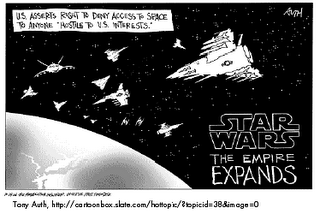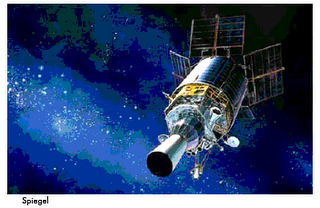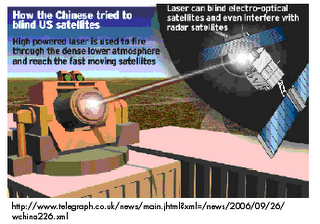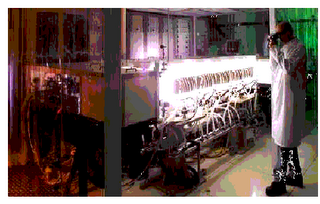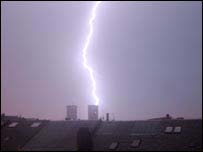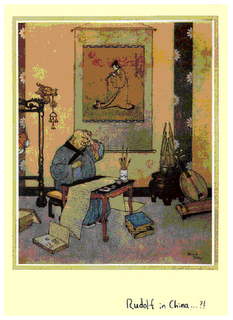Liu Hsieh's Grammatology
First, Han-Liang Chan’s reading of Liu Hsieh
Second, my comments on Liu Hsieh
Third, Florian Coulmas’ Writing Systems
(For technical reasons, again)
Liu Hsieh (465 – 522)
When the mind is at work,
speech is uttered.
When speech is uttered,
writing is produced.
The Tao inspires writing
and
Writing illuminates the Tao.
What in mind is idea
when expressed in speech is poetry.
Isn't this what we are doing
when dashing off writing to record reality?
Writing originated
when drawing of bird trace
replaced string knitting.
P'ien Wen
"The revolt against imitative writing was also expressed in a 5th-century style called "pure conversation", an intellectual discussion on lofty matters. Some of these were recorded in a collection of anecdotes entitled `Sayings of the World'. In the 6th century the first book of literary criticism, `Carving of the Literary Dragon', was published by Liu Hsieh (465-522). It was written in the p'ien wen, or parallel prose, style."
Liu Hsieh's stile and strategy of writing, the P'ien-wen, has an antithetic, parallel and chiastic structure which easily can be seen in the "poetic" presentation of the text.
Han-Liang Chan’s Hallucinations about Liu Hsieh
"However, this kind of mimesis is not different from what traditional Chinese scholars believe. The Chinese version of logocentrism can be glimpsed from the following statements of the sixth-century Liu Hsieh, the first and probably the only systematic literary critic in classical and medieval China.
When the mind is at work, speech is uttered. When speech is uttered, writing is produced. The Tao inspires writing and writing illuminates the Tao. What in mind is idea when expressed in speech is poetry. Isn’t this what we are doing when dashing off writing to record reality? Writing originated when drawing of bird trace replaced string knitting. (13-17)These statements from Liu Hsieh, which have been so influential, represent different, and sometimes conflicting, theories regarding the origin of writing and its relation to speech. But they share the same belief in an ultimate, transcendental, undifferentiated, and unmediated reality, be it Tao or nature. In some sense, the metaphysics behind such statements is indeed naive and can be deconstructed by a rereading of the Chinese written character. But there is no fundamental difference between it and the Western logocentric metaphysics, which Derrida sets out to dismantle. There is no reason why Derrida’s deconstruction of Western mimesis cannot be done to its Chinese counterpart. Thus I am tempted to ask:
isn’t Derrida, like Leibniz before him, suffering from the same “European hallucination”that China is of necessity exempt from logocentrism? [...] Under the tyranny of logocentrism, writing is rendered as secondary and subordinate. In Aristotle’s celebrated phrasing which opens
On Interpretation:
“Spoken words are the symbols of mental experience and written words are the symbols of spoken words” (qtd. in Gelb, 13).This formulation, which Derrida criticizes in The Margins of Philosophy as psychologism, is almost a verbatim paraphrase of Liu Hsieh:
“When the mind is at work, speech is uttered. When speech is uttered, writing is produced.”Thus in both China and the West, at least in the Aristotelian and Confucian traditions, the category of writing is inscribed only in relation to speech and to the subject of writing.
It is, as Derrida puts it in “The End of the Book and the Beginning of Writing,” “pneumatological” rather than “grammatological” writing (1976, 17). This primacy granted to speech is open to deconstruction. Therefore, Derrida proposes that writing be shifted to the space of arche-writing (trace, différance)."
Complexity and Chiasm of Speech/Script/World
“When the mind is at work, speech is uttered. When speech is uttered, writing is produced.”This, obviously sounds quite familiar, i.e. Aristotelian.
But the holistic principle of Chinese thinking demands to read the text or paragraph as a whole. I have not to be a sinologist to perceive a fundamental difference between Platonian/Aristotelian phono-logocentrism and Liu Hsieh’s conception.
The Aristotelian concept is hierarchic:
things –> soul –> spoken word –> written word.
"Words spoken are symbols of affections or impressions of the soul; written words are symbols of words spoken. And just as letters are not the same for all men, sounds are not the same either, although the affections directly expressed by these indications are the same for everyone, as are the things of which these impressions are images." AristotleMicro-structure of the asymmetry
A more detailed reading of Liu Hsieh shows that the conception he describes is different in, at least, four ways:
1. it is circular : "The Tao inspires writing and writing illuminates the Tao.",
2. it is co-creative: "writing illuminates the Tao" and
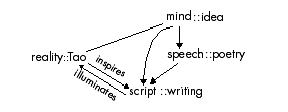
3. it is parallel: "What in mind is idea when expressed in speech is poetry./writing to record reality"
4. it is evocative: "Isn’t this what we are doing when dashing off writing to record reality?"
These four properties are corresponding to the general ontology or world-view of Chinese thinking:
1. dynamism: things in the world are changing (circular, chiastic, co-creative)
2. grid and networking: things are complex and interrelated (parallelism, concurrency).
3. holism: situational, all parts have to be considered which are constituting a pattern.
4. interactional/reflectional: the text involves a reader who is addressed in a persuasive, evocative mode.
But it is also self-referential: "what we are doing?"
The circularity is chiastic, not simply repetitive.
Between "writing illuminates" and "Tao inspires writing" exists a qualitative difference depending on the two involved positions: Tao, writer. And "idea in mind" vs. "poetry in speech" vs. "dashing off writing/recording reality".
There is also a historical comment involved.
As a result we can resume that the Chinese model of language is containing the classic Western model as a part of its complexity, and it seems that the Chinese model is more close to (post)modern scientific models of language than to Western philosophical models of language.
Chiasm of writing
Writing as illuminating (acting),
Writing as being inspired (conceiving),

Reality as inspiring,
Reality as being illuminated.
Reality as reality
Writing as writing
Writing as counter-part to reality
Reality as counter-part to writing.
Patterns of distribution
It doesn’t seem a too wild speculation to mention that the Chinese characters are placed in a way that they configure as a pattern. In such a configuration the intertextuality of the characters is of importance. For the eye, interconnections between the characters are perceivable. It is not depending on the listening of the linear ordered words and sentences but on the visual collection of the placed glyphs. Such situations are well known, also in the West, in modern poetry. A further analysis would have to involve the Chinese writing in concreto, with its glyphs and the "etymology" of the glyphs.
Han-Liang Chan’s statement:
"But they share the same belief in an ultimate, transcendental, undifferentiated, and unmediated reality, be it Tao or nature."seems not to be confirmed by the co-creative interaction of writing in relation to the Tao (reality). The Tao is changing under the action of writing, thus it is not in a simple metaphysical way "ultimate, transcendental, undifferentiated, and unmediated reality".
Hence, the situation is unorthodoxically complex.
Han-Liang Chan’s question
"isn’t Derrida, [...], suffering from the same "Europaen hallucination" that China is of necessity exempt from logocentrism?"
Has no easy answer. As far as logocentrism can be seen as a part of the Chinese model, the answer is yes. As far as the Chinese model is taken in its full complexity, the answer is no.
Again, Han-Liang Chan’s interpretation may be in the tradition of the historic understanding of the Chinese model, but this interpretation is not confirmed by Liu Hsieh’s text.
Thus, the translation of Tao might then not be logos (ultimate, absolute) but change.
Florian Coulmas’ Confirmation
Interestingly, I found a direct confirmation of my "laicist" reading of Liu Hsieh.
The author of "Writing Systems" Florian Coulmas writes:
"It bears resemblance to Aristotle’s, but upon closer inspection also differs in important respects. In his celebrated essay ‘Carving of the Literary Dragon’ writer and philosopher Liu Hsieh (465–522) states:
"When the mind is at work, speech is uttered. When speech is uttered, writing is produced. The Tao inspires writing and writing illuminates the Tao. What in mind is idea when expressed in speech is poetry. Isn’t this what we are doing when dashing off writing to record reality? Writing originated when drawing of bird trace replaced string knitting." (1983: 13–17)This definition shares a number of elements with Aristotle’s.
A mind at work is what Aristotle calls ‘affections of the soul’. It produces speech that in turn generates writing. The Tao corresponds to nature, that is, things about which ideas are formed in the mind.
However, Liu Hsieh’s statement also contains an element that lacks a counterpart in Aristotle’s definition.
Writing is credited with a creative analytic potential:
it illuminates the Tao.
Moreover, the Tao inspires writing, apparently unmediated by speech.An idea in the mind is expressed in speech, but also in writing that is employed ‘to record reality’.
While Aristotle unambiguously places speech between ideas and written words, Liu Hsieh seems to concede the possibility that ideas are expressed poetically in speech or in writing, where the relationship between the two is not necessarily unidirectional.
This does not imply that, unlike the Greek philosopher, the Chinese denied that writing was bound up with language, but from his account of the relationship between ideas, speech and writing it cannot be concluded that he conceived of writing as a mere substitute for speech.[...]
Linguistic orthodoxy happily concurs with Ferdinand de Saussure’s apodictic statement that made Aristotelian surrogationalism a cornerstone of modern linguistics:
"Language and writing are two distinct systems of signs; the second exists for the sole purpose of representing the first. The linguistic object is not both the written and the spoken forms of words; the spoken forms alone constitute the object." (Saussure 1959: 23)Following this prescriptive instruction, most introductory textbooks of linguistics simply exclude the problematic of writing or make do with a cursory review of a number of writing systems in the final chapter.
Notice in passing that this is quite different in the Eastern tradition of the scientific study of language. The Encyclopedic Dictionary of Chinese Linguistics (1991–2), for example, treats writing systems as its first topic at great length.
A noble and widely accepted reason for ignoring writing or treating it lightly in the West is that all human languages are thought to be equal in the sense that they are expressions of the same inborn faculty of language."
Hidden Heterodoxy in the Hierarchy Thesis
After all, the question of Chinese phonologocentrism has lost its innocence and simplicity; it has to be involved in a complex ’hermeneutic’ and grammatological game of change with its hierarchic/heterarchic, dynamic/co-creative, direct/concurrent aspects.
It turns out to be more interesting to hallucinate on the base of proper reading.
But the Western tradition isn’t as simple as described, too.
A critical reading of the original manuscripts of Plato and de Saussure confronts interpretation with some anti-traditional surprises. But we have to accept that the hierarchic model has dominated the history of western thinking and technology. It was the only paradigm with a manageable operativity. Plato’s approach was too archaic, and de Saussure’s wasn’t even published properly at his time. Today, the hierarchy starts with the narrative of innate basic patterns.
A similar situation to the complex model of speech and writing we will discover in the relationship between polycontextural logic (negative languages) and morphogrammatics.
Hallucinations never end
Leibniz was hallucinating Chinese scriptural culture, Derrida was hallucinating Chinese script, Han-Liang Chan is hallucination Liu Hsieh and Derrida, Florian Coulmas is hallucinating on hallucinations of Ferdinand de Saussure's students, Gotthard Gunther is hallucinating the Chinese asymmetry in favor of his "negative language", I am hallucinating the hallucinations of writing and reading in favor of a hallucinated Chinese Challenge.
Asymmetry/polycontextural logic
From the point of view of the profound asymmetry between spoken and written Chinese language, as Gunther mentioned in his letter, we have not to go too much into further linguistic details of analysis.
However, the asymmetry is not a simple inversion of the hierarchy of spoken and written language but is involved in the complex interactivity between speech/script/world as it was suggested by the thoughts of Liu Hsieh.
It has, further more, to include script as numbers and mathematics.
In Aristotelian philosophy of language/writing there is no asymmetry between the magnitude of language and writing but a hierarchy of relevance. First is spoken language, then written language.
In the Chinese paradigm there is a complex dynamism between spoken/written language and reality.
"That is, in holding to the ideograms, lies an unconscious insight of a massive asymmetry between spoken and written language. It is the written language, on which a main culture rests. It possesses an identity strength, which stands out clearly against the identity weakness of the spoken word." GuntherGunther’s conception of a "negative language" (polycontextural logic) is emphasizing the asymmetry between spoken and written language in respect to formal languages. His negative language is a formal language surpassing traditional formal logic, and thus, strictly not a language but a complex
Today, the Aristotelian hierarchy is still at work in computer science and technology. It is mainly based on Viennese positivism and analytical philosophy and comes as the hierarchy of syntax, semantics and pragmatics. Thus, it has a cultural and economic impact.
The same happens for the Web. The Web is syntactically structured, based on ID numbers, organized in a central administration. The new movement, Semantic Web, tries to add some semantics to it. Computer science is strictly following the narrow path of formal logic.
For China, there are no epistemological barriers produced by the complex scripture to fully assimilate Western logic and scientifity. Simply because the Western hierarchic paradigm of thinking appears as a part of the holistic and heterarchic Chinese paradigm of writing and thinking.
Imperialism of phonetization and Unicode
"In spite of his own European hallucination, which can be deconstructed in and by itself, Derrida’s concept of writing is existential urgency to the Chinese as users of script. Ever since the seventeenth century, the Chinese writing system has been challenged of the curious joint forces of Leibnizian admiration and Hegelian scorn.Attempts to phonetization comes in a pedagogical desguise. It would be much easier for human beings to learn Chinese if it could be reduced to an as simple system as Western alphabets. But this, again, is a Western myth as comparative studies of educational systems have shown. This trend is not aware about the Chinese history which always had the possibility to change the base, but for good reasons, didn’t. Now, a new candidate is learning Chinese, our computers. And surprisingly, instead of denying the complexity of the Chinese characters to feed computers, the contrary happened. Thanks to codification, Chinese characters can be represented in Unicode. And are therefore accessible for electronic writing and printing.
Specifically, it has had to meet the continued challenge of, in Derrida’s words, the imperialism of phoneticization, which has been aggravated since the Opium War by the religious, political, and technological encroachments of Western powers. This language-or more precisely, script-crisis has never been sufficiently addressed.
Among notable projects of language imperialism are the numerous attempts at Latinizing the script and the on-going debate on the so-called “monosyllabic myth.”
Recently, Stephen A. Tyler has proposed a postmodern ethnography by questioning the ethnographer’s very medium of writing for his text and suggesting as an alternative the native’s participatory voice. But I am afraid that in the case of representing China’s essentially script culture, the native’s “voice” has to be silenced in the first place."
Codification as a protection: Unicode
Unicode provides a unique number for every character, no matter what the platform, no matter what the program, no matter what the language.
"With the help of the four-byte coding technology, people can easily type in 70,000 characters in any computer installed with a coordinated database, Wang said, adding that the original two-byte coding could only deal with 20,000 characters.Representing Chinese characters by numbers in the process of codification in Unicode is not reducing Chinese writing to the linearity of alphabetism. Alphabetism would be another kind of writing, Unicode is not another kind of writing but a codification of Chinese writing. Writing is not coding.
The Kangxi Dictionary, a famous Chinese dictionary compiled during the reign of Kangxi Emperor of the Qing Dynasty (1644-1911), is now under the publishing process with the help of four-byte coding. The dictionary was best known for including the most rare characters in the Chinese language.
"Apart from its own meaning, one character also embodies the culture and history of the user", Feng said, "We should better preserve and protect our Chinese characters by using advanced technology."
But nevertheless, Unicode is mapping codified characters onto the linearity of natural numbers. In Gunther’s wording, it is a mapping onto a positive language, that is, onto the arithmetic of a positive language which is an uni-dimensional arithmetic. A negative language, and Gunther considered the Chinese script, because of its complexity, a historical negative language. A negative language then would ask for a pluri-dimensional arithmetics and a complex polycontextural logic. And a codification then would have an other function, it would be rather a formalization then a codification.

